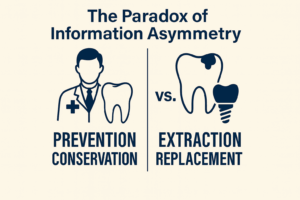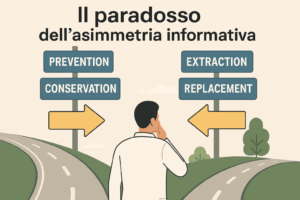In 1978, Herbert Simon won the Nobel Prize for this very concept — a concept that I live every single day in my practice.
The term, coined in the 1950s, combines “satisfy” and “suffice.” Simon used it to describe how we make decisions in complex environments, as opposed to “maximizing,” which seeks the perfect, ideal solution to a given problem.
According to Simon, many real-world problems are marked by computational intractability (too many variables to realistically quantify) or by a lack of information that makes it impossible to apply purely mathematical or rigidly logical procedures.
So, what do we do?
We have two paths: seek optimal solutions for a simplified world, or seek satisfactory solutions for the real world.
Both approaches coexist in management sciences.
But the first — oversimplifying reality into logical models — often carries the greatest risk of catastrophic side effects.
The 2008 subprime crisis is the perfect example.
Blindly applying continuous growth models to an artificially simplified real estate market led to the collapse of an enormous house of cards, which came crashing down with the failure of Lehman Brothers in September 2008.
Simon openly criticized traditional education for teaching decision-making only under conditions of perfect certainty.
That’s why I often smile when I see implant studies conducted on “ideal patients”:
•Extractions performed at least six months earlier
•No parafunctions,
•No periodontal disease,
•Non-smokers,
•Perfect general health,
•Excellent oral hygiene.
Impressive success rates, sure.
But how useful are those numbers when such patients represent barely 10% of a real-world dental practice?
And what about in vitro studies, carried out in perfectly controlled conditions, which are then expected to apply flawlessly to real clinical scenarios?
Or the congress circus, where speakers present immaculate data and case studies where nothing ever fails?
No implants ever fail.
No complications.
Every root canal reaches perfect apex.
Every restoration outshines Mother Nature herself.
Everything, magically, works.
Meanwhile, most real-world implant patients are periodontal patients.
Most patients have no true understanding of prevention.
Getting them to follow maintenance protocols is real, hard, daily work.
Most patients lack the tools to truly evaluate the quality of our treatments.
And more and more often, they face serious financial limitations.
Yet all of this conveniently disappears the moment we step outside our practices.
Nobody talks about daily complications, or the imperfect patients we work with every day.
Reality is denied during the weekend courses, in front of polished slides:
•Flawless rubber dams perfectly inverted into the sulcus,
•No tears, no stains, no signs of the real struggles.
Simulacrums of perfection.
Complete control.
The illusion of man mastering nature.
But reality comes knocking again every Monday morning.
That’s why, over the past twenty years, I have radically changed my way of practicing dentistry:
no longer chasing theoretical perfection, but striving for daily practical solutions.
Not academic excellence — satisficing dentistry.
And I’m pretty sure Herbert Simon would approve.
👉 If you also believe that real-world dentistry should be the core of our education, I’ll see you at the Injectable Restorations European Summit, on November 7–8 in Milan.
Two full days of real techniques, real challenges, real patients.
No showcases, no special effects — just the clinical reality we all face every Monday.








